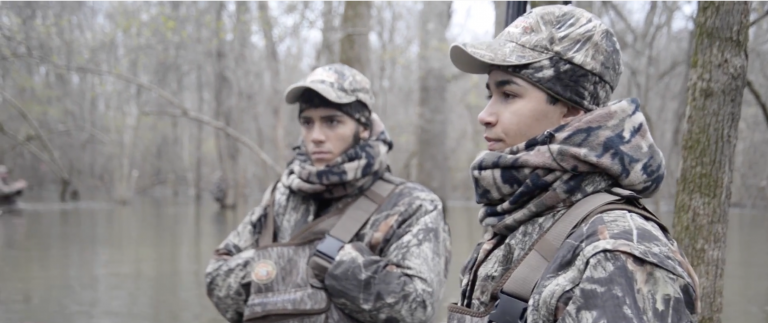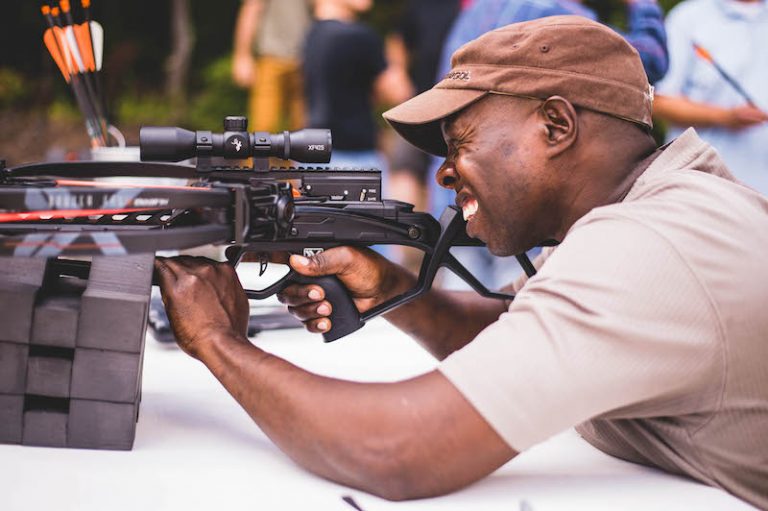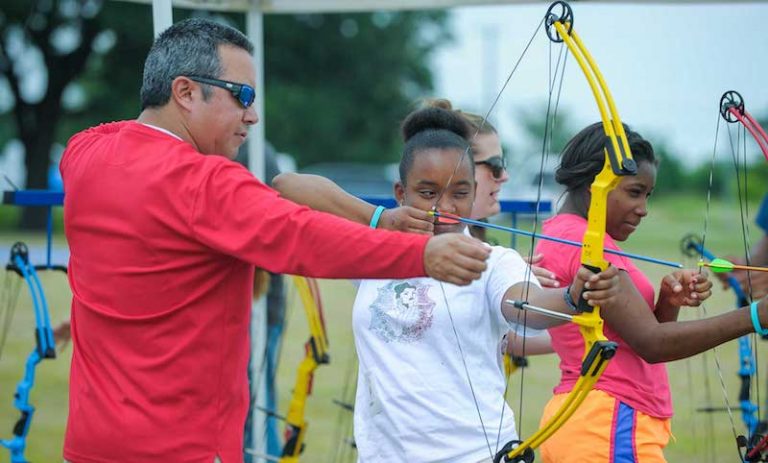Recruit From New Groups
1. Start a Conversation
Many people fear talking about race, but that’s why we must. “When you say, ‘I don’t see race or color,’ or ‘I’m colorblind,’ it’s like you’re shortcutting an understanding of someone else,” Caliz said. “It’s important to acknowledge cultural differences because you can use them to learn and understand others.”
Gray said race, gender and other demographics are touchy subjects, but we must confront them to influence change.
“It’s absolutely necessary to talk about,” Gray said. “We just have to be strategic with our approach. You don’t want to step on anyone’s toes, and you don’t want to offend people, but the conversation is necessary to bridge the gap, and make archery, hunting and outdoor recreation more inclusive.”
Talking to minorities about bowhunting requires respect. Don’t talk down to them. “Recruit them like you recruit everyone else,” King said. Don’t overthink or complicate the situation. Just explain why archery and bowhunting are fun, challenging and rewarding for all participants.
Follow the five-step method in the Bowhunting 360 article “Share Your Passion: Convert Your Nonhunting Friends.” You must introduce bowhunting, make a connection, break down participation barriers, be supportive, and share your favorite resources. For more tips on communicating with customers, read this ATA article.
2. Update Your Marketing Materials
To connect with diverse audiences you must acknowledge and welcome them. Include photos featuring people of color on your website, product packaging, in-store posters, and social-media platforms. By representing all races in your marketing, you make archery and bowhunting more inclusive.
TPWD staff recently updated their marketing materials, which previously featured white males. They started including photos that included people of color to help minorities identify with archery and outdoor activities. When TPWD staff hit the road, they haul trailers emblazoned with pictures of people of different ethnicities so the public knows “this program is for you” and that “you can do this.”
“Stuff like that goes a long way,” Gray said. “It won’t fix the problem or issue, but it definitely improves it. That, along with open dialogue and conversations, keeps us on the right track.”
3. Welcome New Bowhunting Ambassadors
King also thinks the industry must create, sponsor and feature more people of color on its TV shows and in other public venues. He said high-profile icons inspire people, especially kids, to believe they can do anything. King, for instance, took 60 OYEA kids to a NASCAR race where Bubba Wallace, an African-American, took third place.
“These kids didn’t realize there was a black racecar driver participating in that sport,” King said. “The more these kids see a racecar driver who looks like them, the more they’ll go out there or be interested in NASCAR.”
After all, golf has Tiger Woods, bass fishing has Ishama Monroe and Takahiro Omori, and the “ball sports” are filled with diverse role models. King said the bowhunting industry needs diverse public figures to motivate kids and other beginners to try shooting bows and arrows.
4. Ask High-Profile Locals
Although celebrity spokespeople are great for the industry, a local spokesperson is great for your business. To build awareness of your business and reputation among minority groups, Gray recommends finding someone in your target audience to feature as a spokesperson.
“Connect with someone who already has a relationship with the school, organization or group you’re trying to attract,” Gray said. “Then convey your message and let that person be your spokesperson to the group.”
Be sure to choose someone who can relate to – and understand – your target audience. Your spokesperson also must be excited and energetic about bowhunting, and share that enthusiasm naturally.




